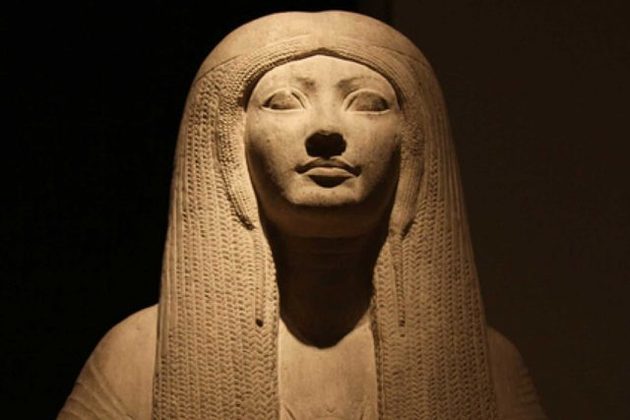A priestess named Enheduanna claimed authorship to poetry and other texts—sometimes in first-person—more than a millennium before Homer.
Over five thousand years ago, people living in a part of Mesopotamia called Sumer started to keep records with cuneiform, the oldest known system of writing. And roughly a millennium after cuneiform emerged, a priestess named Enheduanna began using this writing system in a new way. Her unique texts are the earliest known example of first-person writing, and she may be the first known writer to claim authorship of her work, History writes.
British archaeologists rediscovered copies of her work in 1927, but it took several decades for scholars to credit Enheduanna as the author of her texts (some continue to argue she didn’t write them). Scholars who do believe she authored these texts point to the deeply personal reflections in her writing, as well as the fact that these works were consistently attributed to her long after her death.
'The Compiler of This Tablet Is Enheduanna'
Enheduanna was born in Mesopotamia (part of modern-day Iraq) in the 23rd century B.C.E. She was the daughter of Sargon of Akkad, or Sargon the Great, the king who established the Akkadian Empire that brought Akkadian and Sumerian people under one rule. Sargon appointed Enheduanna to be the high priestess of the moon god Nanna in the Sumerian city of Ur. At some point, a Sumerian king ousted her from the position and forced her into exile. She wrote about this in her poem “The Exaltation of Inanna,” which describes the coup and her pleas to the goddess Inanna to restore her position:
He made me walk a land of thorns./ He took away the noble diadem of my holy office,/ He gave me a dagger: ‘This is just right for you,’ he said.
“It’s written from a very personal perspective,” says Zainab Bahrani, a professor of art history and archaeology at Columbia University and author of Women of Babylon: Gender and Representation in Mesopotamia. Enheduanna describes “being treated disrespectfully” during the coup, and “in one part of it, it seems like she’s describing a sexual violation.”
Enheduanna writes in “The Exaltation of Inanna” that she reclaimed her position as high priestess, and credits Inanna with making this happen. In addition, she reflects on the creative process of writing, comparing the composition of her poem to the act of childbirth:
“I have given birth, oh exalted lady, (to this song) for you.”
Enheduanna was not the first person to write poems or hymns; but what makes her work unique is that she wrote from the first-person perspective, and claimed authorship of her work. In a compilation of hymns that she arranged, she added this postscript:
The compiler of this tablet is Enheduanna. My king, something has been produced that no person had produced before.
The Case for Enheduanna's Authorship
Enheduanna’s work had a lasting impact. For hundreds of years after her death, “The Exaltation of Inanna” was an important text in scribal schools, says Sidney Babcock, curator of the exhibit She Who Wrote: Enheduanna and Women of Mesopotamia, ca. 3400–2000 B.C. at The Morgan Library & Museum in New York City.
The poem became part of the ten canonical texts—the core curriculum, shall we say—that was taught then for the next 500 years-plus in the scribal schools. And because of that, there’s about 100 different copies of this exaltation that have survived.
, expert explains.
Yet after the rediscovery of her work in 1927, male European scholars were slow to recognize her as the author of her writing, in part because many did not associate literacy with women during this period. As an example, Babcock points to one of the artifacts on display in She Who Wrote: a statuette of a woman with a tablet in her lap, circa 2112 to 2004 B.C. To Babcock, who is head of the department of ancient Western Asian seals and tablets at The Morgan, this statuette demonstrates a connection between women and literacy. But when a male German scholar wrote about this same statuette a century ago, he confessed that its meaning was unclear to him.
Then who wrote it?
Even today, some scholars do not think that Enheduanna wrote the work that bears her name and her first-person perspective (one theory is that a male scribe composed the texts on her behalf). Bahrani says that the debate is “not about the evidence as such,” but rather “how one should interpret that evidence.” While she thinks it is important to acknowledge this debate, she believes “firmly” that Enheduanna was an author who wrote her own work.






